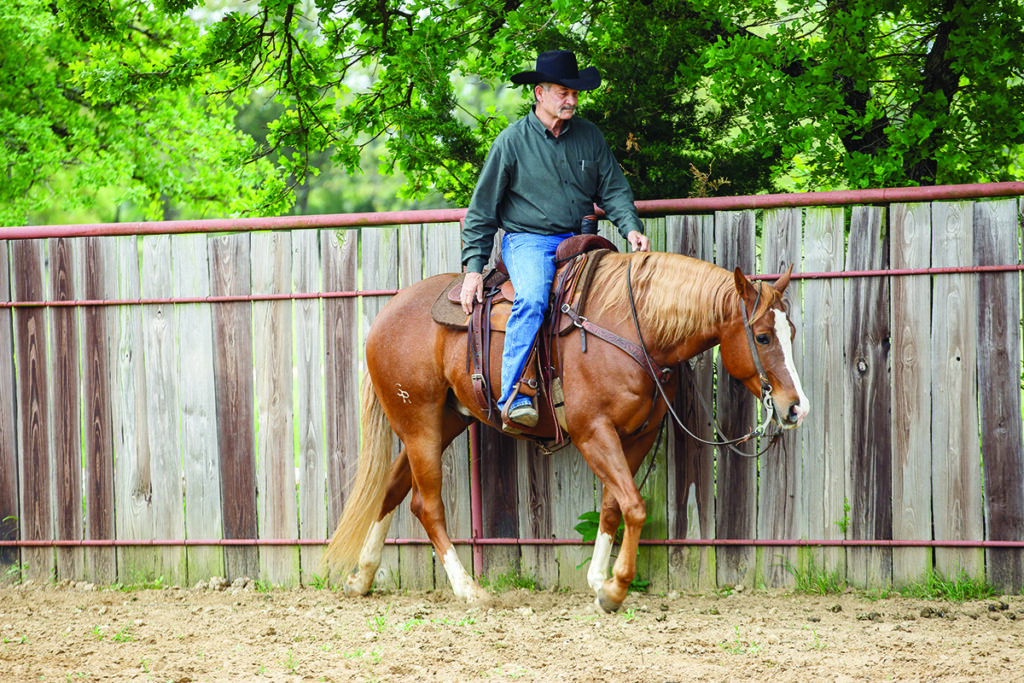
Of all the ranch versatility events, ranch riding has gained the most popularity; it’s also become the most competitive. If you’re on a quest to achieve high marks in ranch riding, three-time American Quarter Horse Association (AQHA) Versatility Ranch Horse World Champion Mike Major says you’ll want to perfect your downward transitions from extended gaits to the slower gaits, showing off your horse’s willingness to respond to your guidance. But tackling this element can be a struggle. Here are some tips to help you improve.
The Goal
“Your horse should be smooth-moving, fluid-moving and forward-moving,” says Major. “But I also want a horse that is going to really come back to the bridle when you pick your rein hand up. He needs to melt into your hand, and his body needs to melt together, especially when you’re doing a downward transition. And you want a crisp response to your cues.”
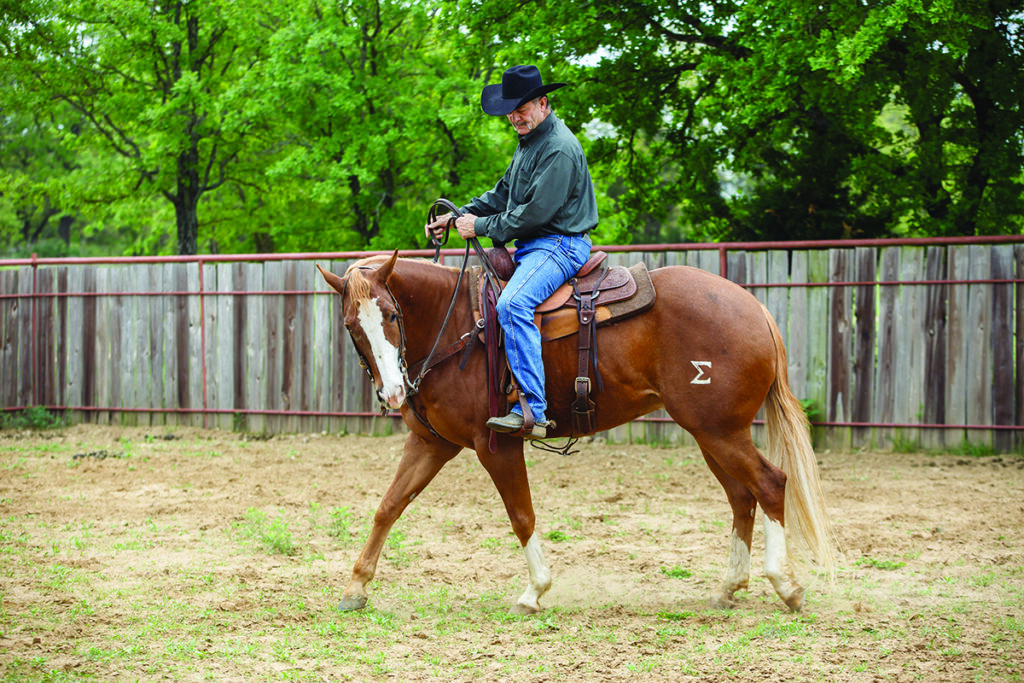
The Problem
Major says that sometimes when you ask your horse to shift from a lope to a jog in the ranch class, for example, the horse may resist your cues, bracing in his neck and traveling with his weight on his front end.
“When you’re going faster and you need to slow down, your horse really needs to use his back end to collect himself and create a pleasing, smooth picture,” says Major. “Collection is one of the biggest things for the ranch riding class, as well as transitions—especially the downward transitions.”
It Starts with Collection
Early on in your horse’s training, he should be learning how to move with forward motion and how to transition into a collected stride. Whether your horse has learned this concept already or needs a refresher, Major recommends starting with moving your horse’s body parts around at a walk and jog.
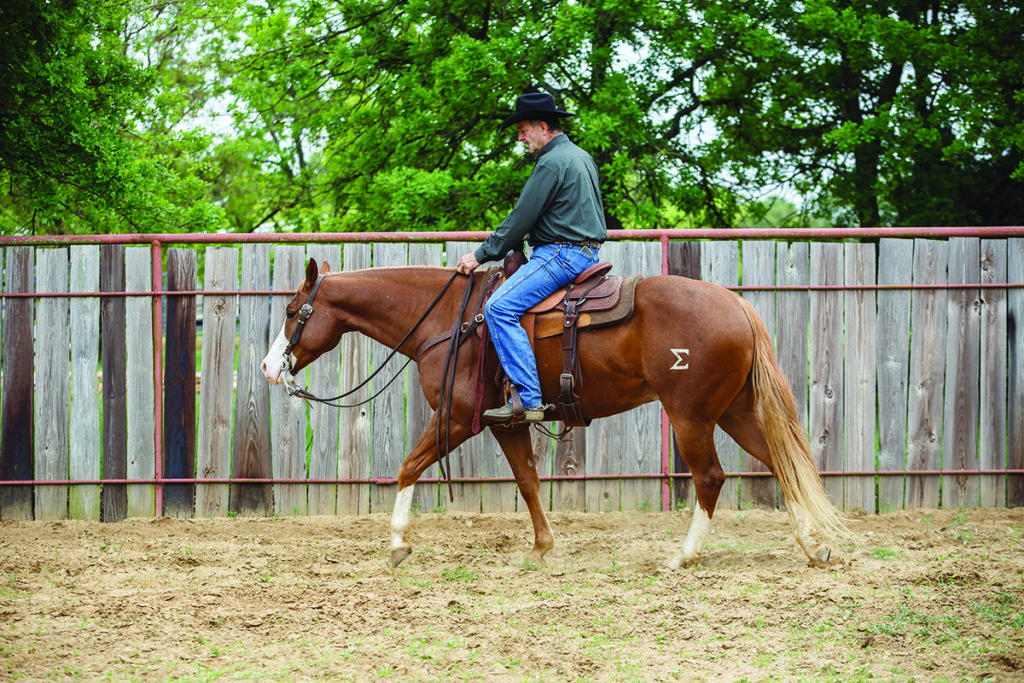
“I would start breaking him down with pressure from one rein at a time, moving his shoulders out,” Major says. “If I’m flexing my horse to the right, I’m going to move his shoulders to the left, which will soften up his neck. To me, to get collection, your horse has to be soft in his neck. If he’s stiff in his neck, he’s going to be brittle in his mouth, too.”
Major recommends moving in a 12- to 15-foot circle at a walk or a trot—to the right, for example—asking the horse to curve to the right and bringing the horse’s head around to the right until his neck is flexed and soft in response to your reins.
Next, move into what he calls “position one,” where your right leg is beside the front cinch, asking your horse to move his shoulders to the left, picking up his shoulders with your right hand.
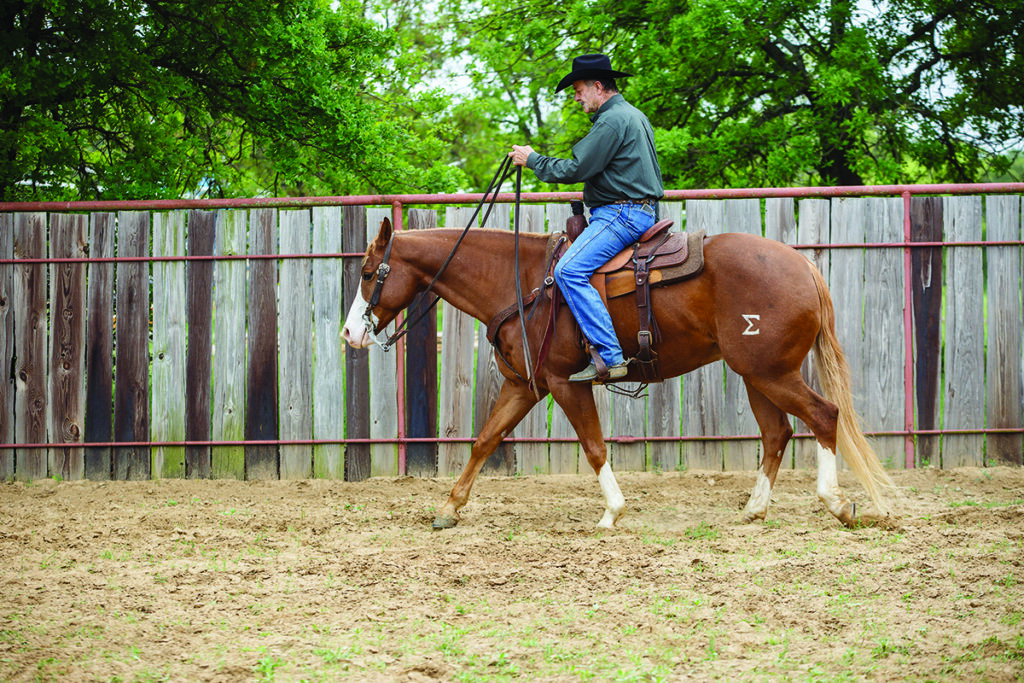
Once your horse responds to your cues with his body, repeat these cues going the other direction, starting with curving on a circle to the left and then asking the horse to move away from your left foot in position one.
“It comes back to having control of your horse’s body, all the way through,” Major says. “You are flexing and then moving his body around in small circles. The horses get responsive to your feet and light on your hands.”
To The Next Level
After your horse understands how to collect on a circle and move his shoulders in response to your cues, you should be able to walk in a straight line, pick up your reins, and bump with your legs, and your horse will know to collect and give to your hands.
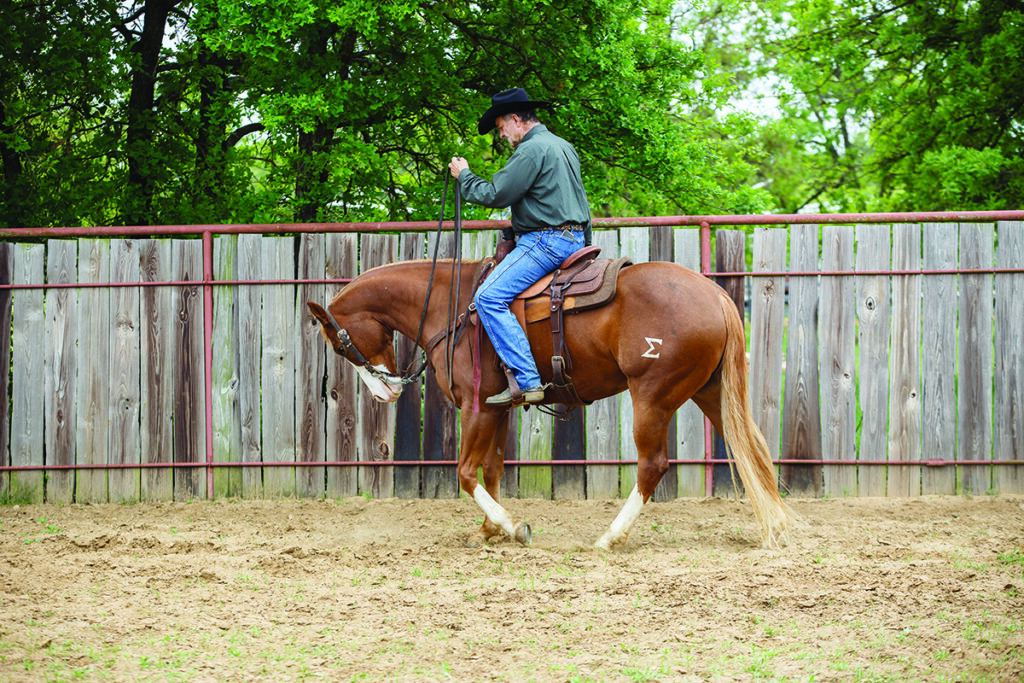
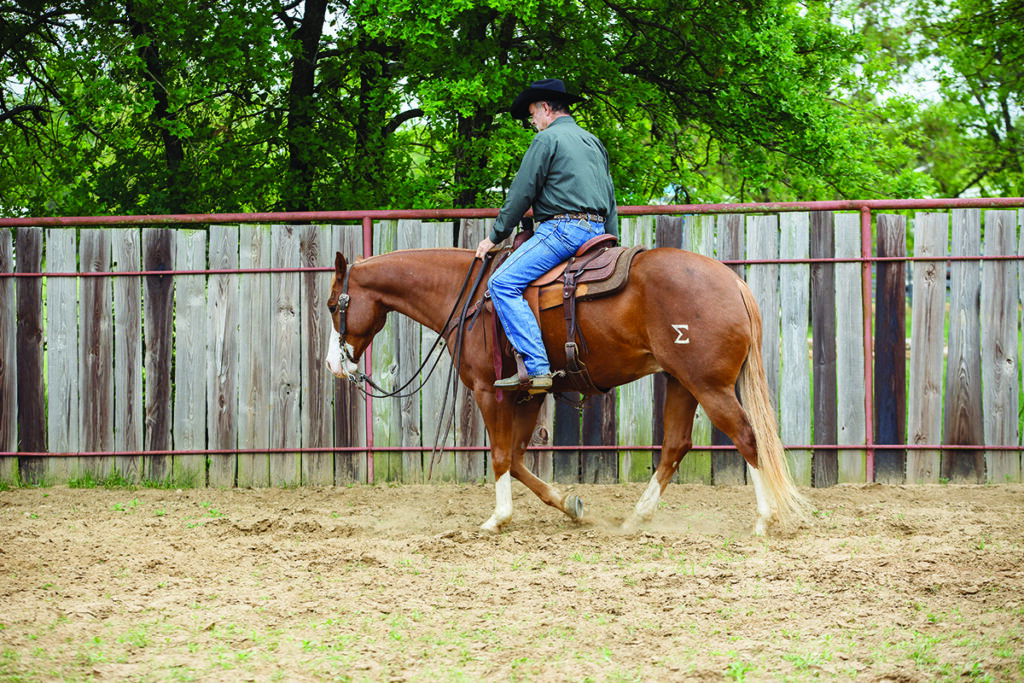
As soon as he softens to your hand and collects, release your rein pressure.
This softening means he will be able to elevate his front end, and he won’t push on your hands, says Major.
“This exercise is the foundation of all the work I do,” he says. “Have the horse soft in the face, moving off of your foot pressure, so that when you pick up the reins, your horse comes to your hand rather than pushing against the pressure.”
If your horse does try to push on your hand, Major says he holds the reins steady, keeps the horse collected, and bumps the horse’s sides until he rises up into the bridle and softens—then he releases.
Downward Transition Practice
In a downward transition during a ranch horse class, it’s crucial that your horse is soft and collected, but also responds to your cues with a crisp change of gait, according to Major. To evaluate a horse’s buttons, send your horse out on the rail of your arena at your chosen gait—extended trot, for example. Then ask him to collect with a verbal cue—which varies depending on the gait you’re slowing down to—then connect with his mouth using your reins.
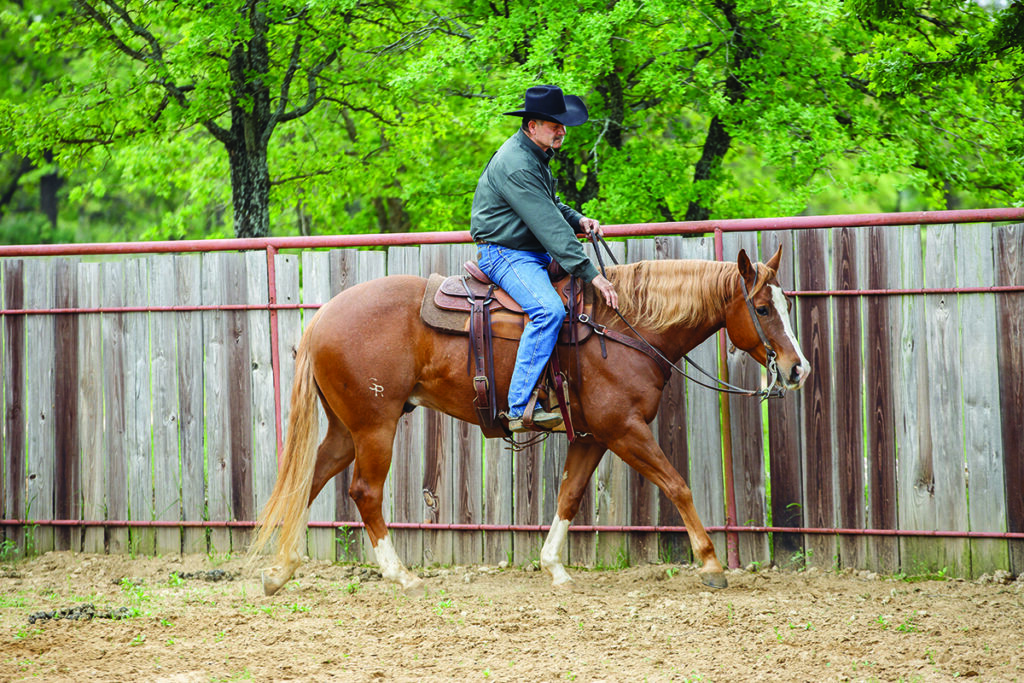
“The verbal cues are probably as helpful as anything,” says Major. “You can choose whatever verbal cue you want for the different gaits. They’re very beneficial in the show ring, if you both are uptight. The verbal cue gives your horse a little bit of a forewarning, which can help ease into that transition.”
If your horse doesn’t immediately shift to the slower speed, pick up your reins to follow up. You can reinforce the command by reaching down the inside rein and gently asking your horse to flex his head and neck into a stop, bumping with your legs and taking up contact on the outside rein to soften him up into the bridle.
“As soon as he softens up, I’m going right back into that extended trot,” says Major. “I’m not rough at all when taking up the rein—it’s not a punishment—but I am going to ask him to flex and give to the reins and then walk him back out of it as soon as he’s soft.”
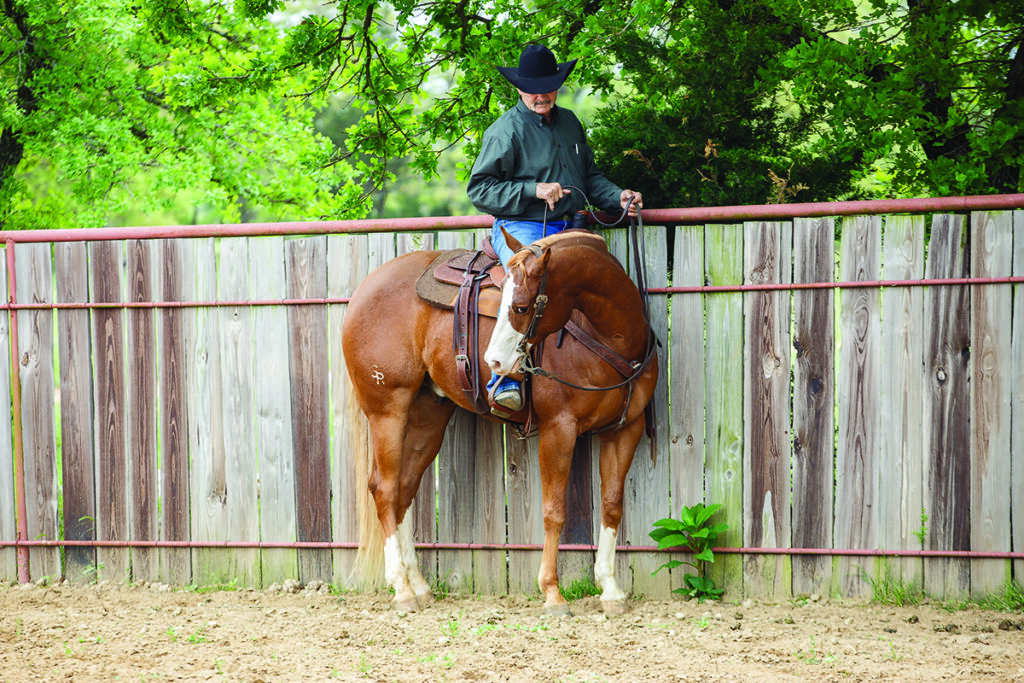
Essentially, says Major, a good downward transition comes from the combination of a horse that’s soft and able to be collected with a gentle rein cue, as well as responsive to a voice command.
Practice upward and downward transitions every time you ride, but Major warns not to overdo it—just move through the paces a few times, focusing on your horse’s soft response to verbal commands.
“Repetition is the whole trick to downward transitions,” says Major. “It doesn’t take too long for horses to figure it out.”
Meet the Trainer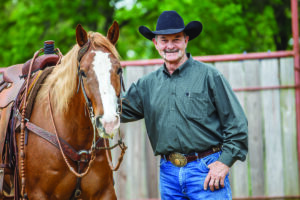 Mike Major is an American Quarter Horse Association (AQHA) Professional Horseman and a three-time AQHA Versatility Ranch Horse World Champion, including two world titles in ranch riding and several reserve titles. He has won at the Stock Horse World Championship three times. He was the 2010 Project Cowboy champion and the winner of the cow horse competition at the 2010 Battle in the Saddle. Located in Bowie, Texas, he trains horses and amateurs for performance events. |
This article about downward transitions in ranch riding originally appeared in the August 2021 issue of Horse Illustrated magazine. Click here to subscribe!





